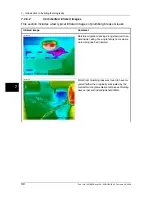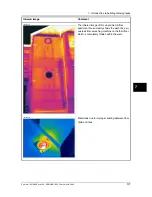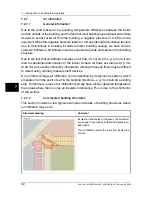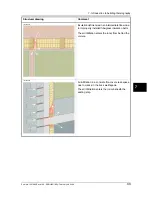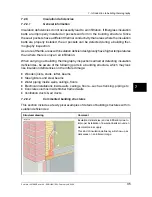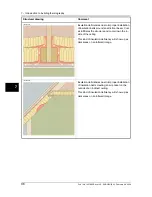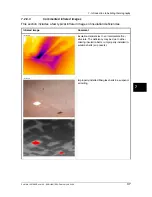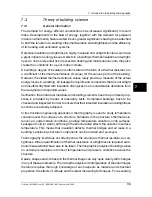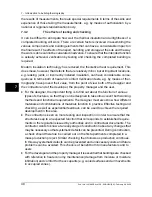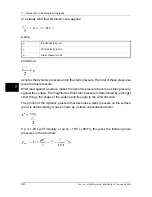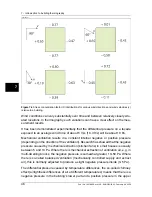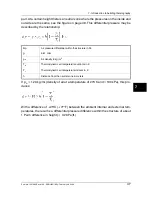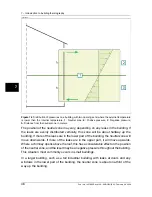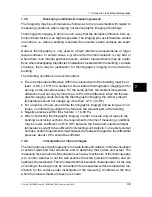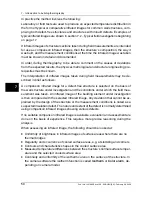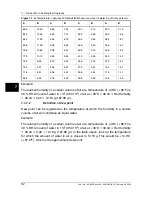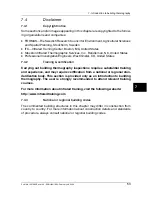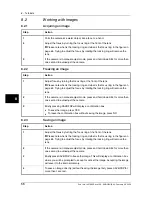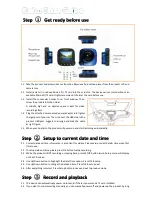
The temperature changes associated with variations in the
U
value are generally
gradual and symmetrically distributed across the surface. Variations of this kind do
of course occur at the angles formed by roofs and floors and at the corners of walls.
Temperature changes associated with air leaks or insulation defects are in most
cases more evident with characteristically shaped sharp contours. The temperature
pattern is usually asymmetrical.
During thermography and when interpreting an infrared image, comparison infrared
images can provide valuable information for assessment.
The sources of disruption in thermography that occur most commonly in practice are
■
the effect of the sun on the surface being thermographed (sunlight shining in
through a window);
■
hot radiators with pipes;
■
lights directed at, or placed near, the surface being measured;
■
air flows (e.g. from air intakes) directed at the surface;
■
the effect of moisture deposits on the surface.
Surfaces on which the sun is shining should not be subjected to thermography. If
there is a risk of an effect by sunlight, windows should be covered up (closing Venetian
blinds). However, be aware that there are building defects or problems (typically
moisture problems) that only show up when heat has been applied to the surface,
e.g. from the sun.
For more information about moisture detection, see section 7.2.2 – About moisture
detection on page 19.
A hot radiator appears as a bright light surface in an infrared image. The surface
temperature of a wall next to a radiator is raised, which may conceal any defects
present.
For maximum prevention of disruptive effects from hot radiators, these may be shut
off a short while before the measurement is taken. However, depending on the con-
struction of the building (low or high mass), these may need to be shut off several
hours before a thermographic survey. The room air temperature must not fall so much
as to affect the surface temperature distribution on the structure’s surfaces. There is
little timelag with electric radiators, so they cool down relatively quickly once they
have been switched off (20–30 minutes).
Lights placed against walls should be switched off when the infrared image is taken.
During thermography there should not be any disruptive air flows (e.g. open windows,
open valves, fans directed at the surface being measured) that could affect the surfaces
being thermographed.
7
42
Publ. No. 1557882 Rev. a156 – ENGLISH (EN) – February 28, 2006
7 – Introduction to building thermography
Summary of Contents for ThermaCAM B2
Page 2: ......
Page 4: ......
Page 6: ......
Page 7: ...ThermaCAM B2 User s manual Publ No 1557882 Rev a156 ENGLISH EN February 28 2006...
Page 191: ......



